Askos
The Askos was found in tomb 10 AR of the necropolis in Sulky, and belongs to a set of grave goods dated to the mid-fifth century B.C. Our specimen (figs. 1-2) belongs to the typology of bird-shaped vessels, which reproduce the shape of a bird, it has three feet, and reproduces a duck or a swan in a rather summary way.

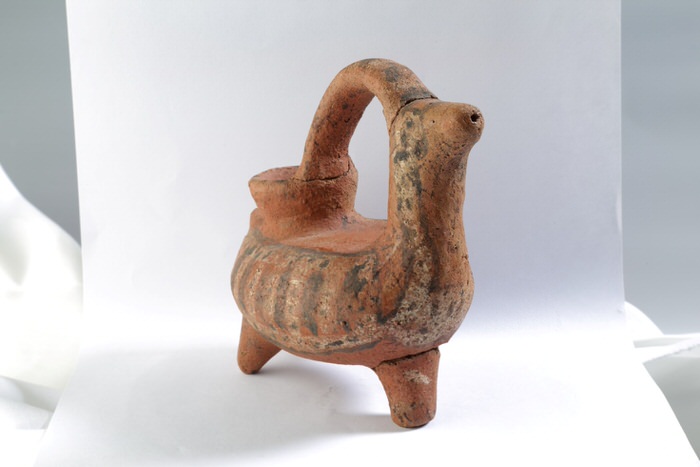
The rear end of the Askos is pointed in order to represent the tail of the bird. The entire vessel is then enriched with a decoration in black and white paint on the red clay surface. This outlines the various parts of the body of the bird: the wings, chest and head.
Another bird-shaped Askos found in Sulky is kept at the National Archaeological Museum of Cagliari and has the form of a dove (fig. 3).
The Phoenician-Punic bird-shaped Askos is inspired by the same type of vascular Cypriot and Philistine production and is present in funerary, sacred (as in the Tophet) and housing contexts. Many different shaped ones have been found in Sardinia and the Punic world: the horse-shaped (fig. 4) and ox-shaped (fig. 5) ones are widespread. Furthermore, clay is not the only material used: in fact, bronze Askoi can be found (fig. 6).
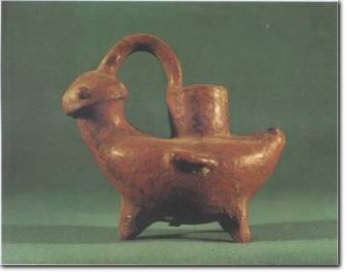
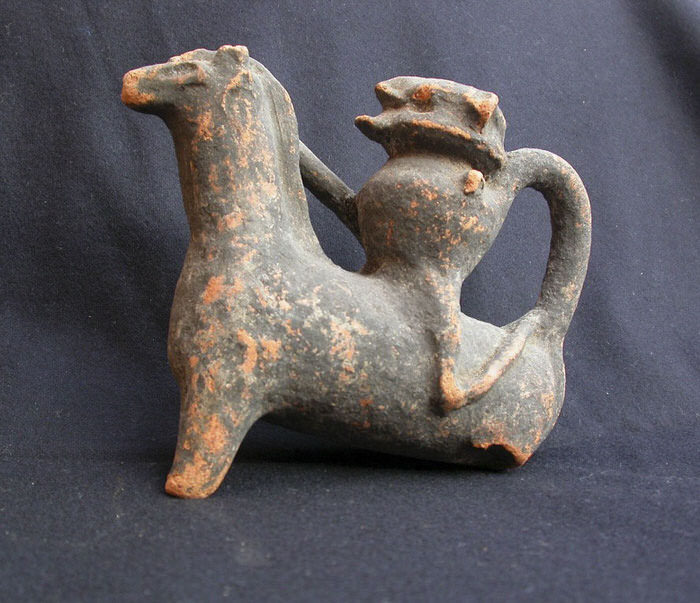
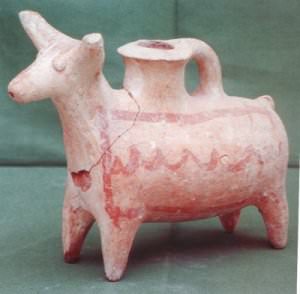
What was the Askos used for? Its primary function was to contain liquids, or more likely, ointments, a hypothesis confirmed in this case by the presence on the back of an opening with small holes which was probably used for filtering fragrant herbs.
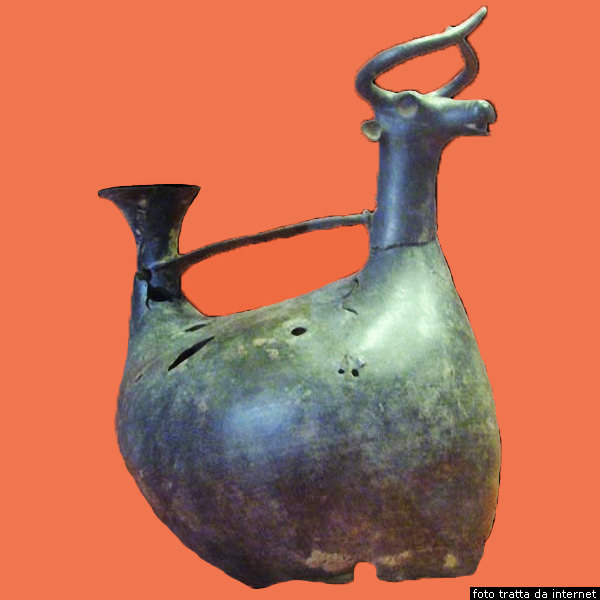
Bibliografia
- P. BARTOLONI, Il museo archeologico comunale “F. Barreca” di Sant’Antioco, Sassari 2007.
- CINTAS P., Manuel d’archéologie punique I, Paris 1970.
- S. MUSCUSO, Il Museo “F. Barreca” di Sant’Antioco:le tipologie vascolari della necropoli di Sulky = Sardinia Corsica et Baleares Antiquae, Sassari, VI, 2008, pp. 9-39.

 VR
VR